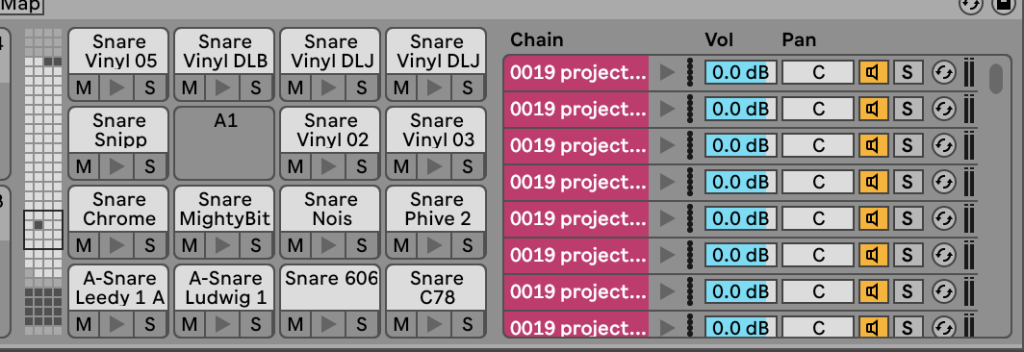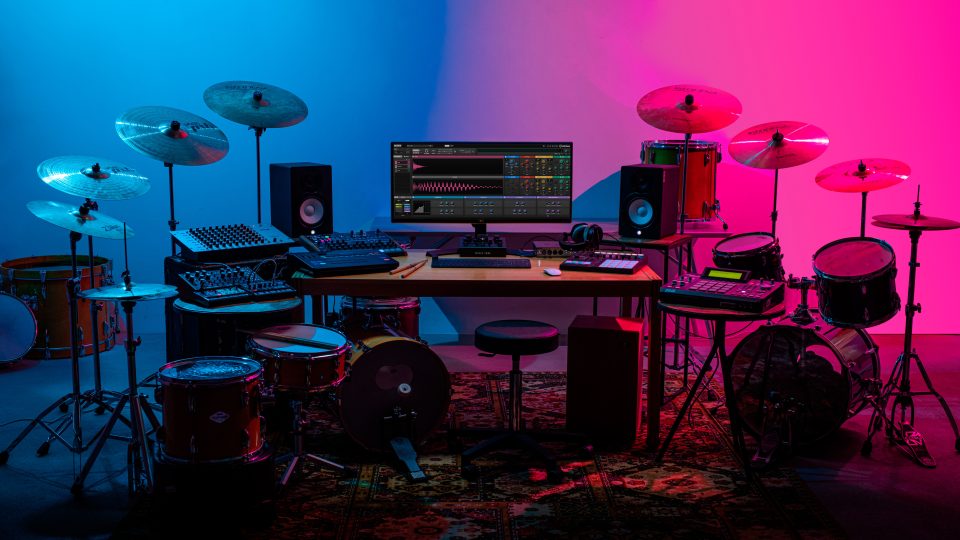Drum and Percussion Banks: Ultimate Production Workflow Hack
The key to effective beatmaking is to establish a slick and organised workflow. The less time spent on technical distractions, the more you can focus on creativity and sound. Since drums form the backbone of any beat, having a structured approach to drum selection and programming is crucial. This is where pre-prepared drum and percussion banks come into play. In this blog, we’ll explore how these curated collections can revolutionize your workflow, allowing you to produce high-quality beats more efficiently and easily.
Why Pre-Prepared Drum Banks Improve Workflow
Maintaining creative momentum is key to productive beatmaking. Having to search for the right kick, snare, or hi-hat, can seriously disrupt your flow. Pre-prepared drum banks help by:
- Saving Time: Instead of sifting through thousands of samples and presets, you can instantly access pre-selected drum sounds that align with your tastes.
- Ensuring Consistency: A well-curated drum bank helps maintain a signature sound across your beats.
- Streamlining Decision Making: Too many options can hamper the creative process and overwhelm you. A refined selection makes choosing the right sounds more efficient.
- Boosting Creativity: You can focus more on composition and arrangement, rather than selecting and editing drum hits. Percussive banks also provide a quick route to drum embellishment that can take your drum tracks to the next level.
Best Practices for Making Effective Drum & Percussion Banks
To fully benefit from the power of the drum bank, you need to organize and curate them effectively. Here are some best practices for maximum Drum bank efficiency:

Curate Your Selection
The key is to curate a selection of the best drums to your ears. Avoid cluttering your drum banks with unnecessary samples that are unlikely to get used. Stick to high-quality one-shots that you know will work well with your production style.
Organize by Type
Create separate folders for each drum sound i.e kicks, snares, hi-hats, claps, and percussion. You may even want to create separate folders for main drum hits and drum layers. This way, you can quickly locate the sounds you need and audition them strategically.
Label Clearly
While the key to drum banks is to use your ear to audition sounds it is still important to have a good naming convention. Give your samples descriptive names such as “Punchy Kick,” “Warm Snare,” or “Crisp Hi-Hat” can help speed up the selection process. Numbering your sample names may also assist in the ordering of your sample selection.
Be Aware of Key
All drums and percussion will have an inherent key. For optimum drum bank leverage label your drum hits with the corresponding key. If your DAW does not feature key detection there are various plugins such as waves key detector that will detect the key of a drum. You may even choose to pitch all the one-shots to the same key.
Maintain Consistent Drum Volumes
One of the most important factors in effective drum bank management is to normalise all the drum hits so they are of a similar volume. Our ears have a habit of selecting sounds that we perceive as being louder so in order to avoid this use your ears to manually adjust the volumes of all the one-shots in your bank. This will also help when layering drums as we don’t want inconsistencies in the amount of layered effect. Include Variation
While it’s tempting to fill your banks with only the punchiest phattest drums these types of drums may not suit every application. you should also consider the drum’s textural qualities. Including drums that have interesting elements such as reverb tails, quirky noises such as squeaks, clicks, static, distortion and noise. Dialling in a characterful drum sound can help inspire more original drum tracks.
Setting up your Drum Racks in a DAW
By organizing your drum samples within dedicated samplers like Ableton’s Drum Rack or Logic Pro’s Drum Machine Designer, you can quickly access and audition sounds with ease. Integrate these sampled drum banks into your DAW’s opening session template, ensuring that every new session begins with all your essential drum sounds preloaded and ready to deploy at a moment’s notice.

Using Pre-Prepared Drum Banks Effectively
So you have followed the previous steps and now have a deadly arsenal of personally chosen drum sounds at your disposal. Let’s look at some practical ways in which these banks could work for your beatmaking.
Drum Patterns
Drum programming is a fundamental aspect of beatmaking and relies on two key elements: sound selection and sequencing. To get started, pull up some choice initial drum sounds onto your pads or keys. Once your sounds are ready, begin crafting a drum pattern.
Once you have finalised a groove, take advantage of your pre-prepared drum banks to experiment with different sounds. To do this efficiently, select all the corresponding MIDI notes for a specific drum element and, while your pattern loops, shift these notes up or down to scroll through different samples. This method allows for quick and intuitive sound selection, helping you discover the perfect drum hits without disrupting your creative flow.
Drum Key
If you’ve taken the time to ensure that all of your drum hits are in the same key, you’ll soon reap the benefits. Matching the key of your drum samples to your melodic elements creates a more cohesive and polished sound. To achieve this, simply select all your drum samples and adjust their pitch universally until they align with your track’s key. This small adjustment can make a significant difference, helping your drums blend seamlessly into the mix. It’s a technique that seasoned producers use to achieve professional-quality tracks and mixes.
Drum Layering
Drum layering is a fantastic technique to add depth and impact to your drum sounds. One way to layer drums is by duplicating the drum track so that you have a separate MIDI sequence for the element you want to enhance. Isolate the specific drum hits you wish to reinforce and experiment with different samples from your drum bank to find a complementary sound. If your drums are already tuned to the same key, select all layers and adjust their pitch accordingly to maintain harmonic coherence.
Another layering method is to stack an additional layer(s) onto the sample pad or key within your sampler. The advantage of this technique is you can then make additional drum edits without having to replicate the changes on a corresponding midi track.
For even greater flexibility, consider creating a dedicated drum bank specifically for layering. Including percussive and textural sounds in these banks can add unique character and depth to your drums. Don’t be afraid to mix in unconventional elements, as these can help shape a distinctive and engaging rhythmic foundation.
Percussive Playtime
Good use of Percussion can often be the difference between mediocre drums and complete stompers. You just need to dig into some Timbaland or Neptunes productions for proof of this. And while percussive loops can provide a great option programmed percussion provides the ultimate in control and flexibility. By curating banks of percussion one-shots you have access to a host of bespoke sounds ready to be flipped in whatever ways you see fit. You may even want to create various percussion banks each with a specific theme i.e Shakers, Scrapers, metallic perc etc.

Summary
Well-organized and pre-prepared bespoke drum banks are an essential tool in any good beatmakers’ arsenal. It streamlines workflow, enhances creativity, and ensures consistency in your productions. Taking a little time upfront to curate and prepare dedicated banks will eventually pay big dividends as it allows you to stick to the main agenda of beatmaking and not sound scouring.
If you are yet to set up some drum banks, there is no time like the present. Even if you just throw in a handful of your favourite go to hits as a starting point. The great thing about drum banks is they can always evolve by adding to them when you stumble across a killer hit.
And if you need a great place to source sample material for your drum banks then look no further. We have an immense and varied selection of drum and percussion one-shots here at RouteNote Create. And starting at just $2.99 for 100 samples these samples will be making the bank and not breaking the bank.
